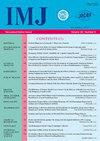青年慢性椎源性神经根病患者的心理运动障碍特点
Q4 Medicine
引用次数: 0
摘要
根据目前的观点,神经性疼痛的发展包括外周和中枢致敏机制,病理增强兴奋发生器的出现,病理非逻辑系统的出现,在此基础上形成了特定的临床疼痛形式。在30 - 40%的背痛患者中观察到神经性疼痛。为了研究青年人患椎体源性腰骶神经根病的精神-情绪障碍与慢性疼痛持续时间的关系,对97人进行了检查。为了评估疼痛综合征,我们使用视觉模拟量表和DN4问卷,对于反应性和个人焦虑水平,我们使用Spielberger - Khanin测试,抑郁水平使用Beck量表,虚弱表现物化使用MFI - 20。患者的主诉分为特异性(痛觉性和神经性疼痛综合征)和非特异性。接受检查的患者的非特异性主诉包括情绪领域的障碍,其结构如下:衰弱、焦虑、抑郁及其组合,以及躯体症状的存在,这一点经神经心理学测试证实。在分析情绪障碍的频率和严重程度对慢性疼痛持续时间的依赖性时,发现这些模式增加了所有情绪障碍的频率,降低了焦虑的严重程度,增加了抑郁的严重程度,与衰弱的严重程度相同。根据本研究的结果,得出以下结论:焦虑症的严重程度随着病程的延长而降低,抑郁症的严重程度增加。在这类慢性疼痛持续时间的患者中,衰弱综合征的严重程度没有显著差异。关键词:慢性椎源性腰骶神经根病,衰弱,焦虑,抑郁,年轻患者。本文章由计算机程序翻译,如有差异,请以英文原文为准。
FEATURES OF PSYCHO-EMOTIONAL DISORDERS IN YOUNG PATIENTS SUFFERING FROM CHRONIC RADICULOPATHIES OF VERTEBROGENIC GENESIS
According to current notions, the development of neuropathic pain includes the mechanisms of peripheral and central sensitization, the emergence of a generator of pathologically enhanced excitation, pathological illogical system, on the basis of which a specific clinical form of pain is formed. The neuropathic nature of pain is observed in 30−40 % of the patients suffering from back pain. In order to study the psycho−emotional disorders in relation to the duration of chronic pain in young people suffering from the vertebrogenic lumbosacral radiculopathy, 97 people were examined. To estimate pain syndrome a visual−analog scale and DN4 questionnaire was used, for reactive and personal anxiety level we involved the Spielberger − Khanin test, the Beck's inventory was applied for the depression level, MFI−20 for objectification of asthenic manifestations was utilized. Complaints of the patients were divided into specific (nociceptive and neuropathic pain syndrome) and nonspecific. Non−specific complaints in the examined patients included disorders of the emotional sphere, which had the following structure: asthenic, anxiety, depressive and their combinations, as well as the presence of somatoform symptoms, which was confirmed by neuropsychological testing. In the analysis of the dependence of frequency and severity of emotional disorders on the duration of chronic pain, the patterns were found to increase the frequency of all emotional dysfunctions, reduce the severity of anxiety and increase depression with the same severity of asthenic ones. According to the results of this study, the following conclusions were made: the severity of anxiety disorders decreases with increasing duration of the disease, and the depressive disorders increase. The severity of asthenic syndrome did not differ significantly in this category of patients with any duration of chronic pain.
Key words: chronic vertebrogenic lumbosacral radiculopathies, asthenic, anxious, depressive disorders, young patients.
求助全文
通过发布文献求助,成功后即可免费获取论文全文。
去求助
来源期刊

International Medical Journal
医学-医学:内科
自引率
0.00%
发文量
21
审稿时长
4-8 weeks
期刊介绍:
The International Medical Journal is intended to provide a multidisciplinary forum for the exchange of ideas and information among professionals concerned with medicine and related disciplines in the world. It is recognized that many other disciplines have an important contribution to make in furthering knowledge of the physical life and mental life and the Editors welcome relevant contributions from them.
The Editors and Publishers wish to encourage a dialogue among the experts from different countries whose diverse cultures afford interesting and challenging alternatives to existing theories and practices. Priority will therefore be given to articles which are oriented to an international perspective. The journal will publish reviews of high quality on contemporary issues, significant clinical studies, and conceptual contributions, as well as serve in the rapid dissemination of important and relevant research findings.
The International Medical Journal (IMJ) was first established in 1994.
 求助内容:
求助内容: 应助结果提醒方式:
应助结果提醒方式:


